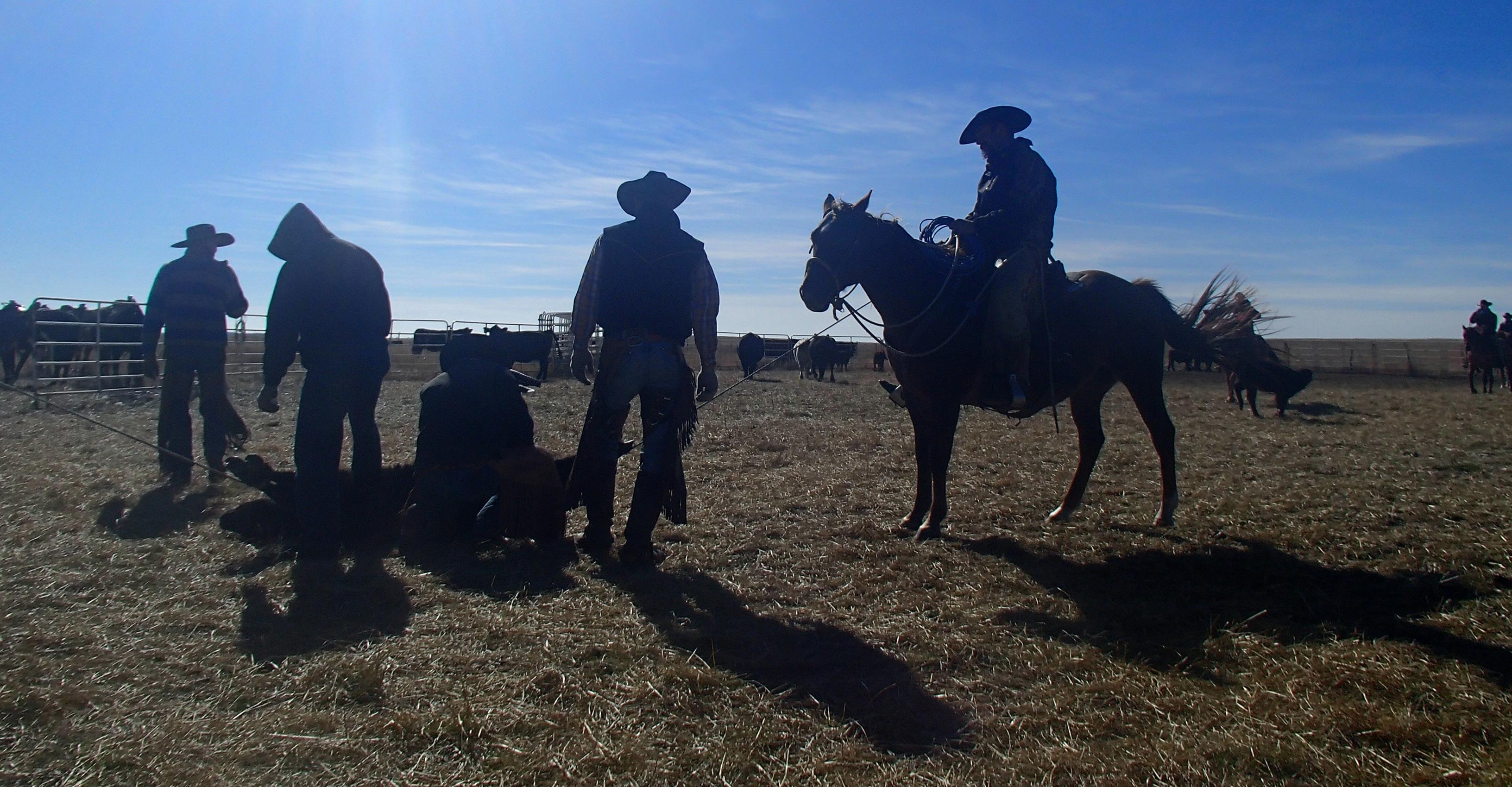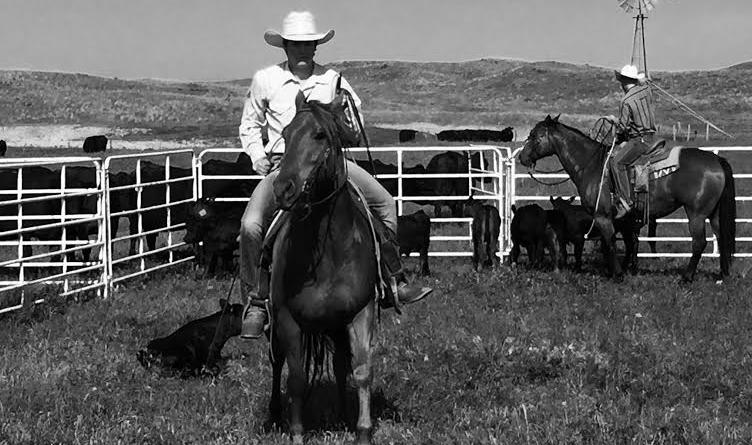
5 minute read
Animal Stewardship Lameness in the Working Horse
By: Dr. JD Lillich, DVM, MS, Diplomate ACVS, Kansas State University
Across the vast and varied uses of horses within this country, none sees more activity than the working cow horse. Whether it’s working cattle on the ranch or riding pens, the job demands a horse to be used virtually every day for long periods of time.
As a consequence, these working horses are going to experience “wear and tear” within the musculoskeletal systems (the muscle, the joints, and the bones), and this usually results in a horse that becomes lame (an abnormal gait at the walk or trot). Each athletic discipline has their own set of predisposing factors that can cause problems or injury.
For example, horses that work at speed (primarily racing) are predisposed to injuries that fracture bones (minor joint fractures are far more common that major long bone fractures) or tear soft tissues (tendons or ligaments). In this instance, speed kills or does major damage.
While all equine disciplines have their own common sets of issues, no horse, no matter the use, is immune to problems involving the foot. In fact, the old proverb of “no foot, no horse” holds true for virtually every breed and use of horse.
That being stated, how can this simple statement be applied to the working horse in a practical fashion to ensure long and sustained use of a horse that has to work every day, in variety of jobs and over a variety of surfaces?
This article is intended to point out some very simple steps that can be taken to limit the impact of long use on a working horse, to extend its useful lifespan and increase the horse’s and rider’s quality of life.
Selection of the Horse
This clearly is the starting point for any equine athletic discipline, and we can’t get away from the fact the genetic base of the horse rules the day in this area. Horses are simply amazing at being able to tolerate and excel at jobs with training. However, we can’t overlook the basic truth that we have to have good starting material in order to develop a product that works well.
When considering a horse for pen work, the quick and fundamental question that needs to be asked is what the selection criteria was used to create this horse. Meaning, was the horse bred to do this work and did the lineage do this work?
When it comes right down to it, the horse that works every day needs to have two solid attributes, one mental and one physical. Contrast this with what is needed of the race horse, who only has to have enough mental capacity to handle crowd excitement for 15 minutes and stand in the gate for 15 seconds, but needs to have the physical ability to run a sustained speed for several minutes. Assessing mental abilities is a topic all in itself, so let’s just focus on the physical assessment of a horse.
The body of working horse has to be physically balanced, with correct limb confirmation, and have a size of foot that matches the body. This is where the rub comes in because in years past we have bred horses with smaller feet.
Many people that breed for the working horse are laboring diligently to reverse this trend, and we still have some improvements to make. Correct limb confirmation allows for the foot to be placed evenly on the ground, and therefore biomechanical loading (allowing bones, muscles and tendons to function as they were designed to function) of the limb is done evenly, not over-straining certain portions of the leg. Without correct confirmation, the foot will not be used properly and therefore the hoof capsule will not grow or wear normally.
The foot itself also needs to be well balanced, meaning, no under run heels, no poor quality hoof capsule, no flat or thin soles, and have a contact with the ground that is bigger than the size of the coronary band. Finally the bone within the distal limb needs to be aligned with the hoof capsule (i.e., the horse needs to have “good angles”).
Let’s be honest here, if you are going to invest the time and money to train the horse to ride pens or work cattle, or if you are going to spend good money buying a horse trained to do that work, make sure the physical substance is present before you start. Poor confirmation and poor quality feet might get you a cheap horse, but it will cost you much more in medications, corrective shoeing, and lost time in the long run.

Daily Care of the Foot
There are many horses used in ranch work that can do their job without shoes. Despite this observation, most veterinary professionals would recommend that horses used every day be shod on a regular basic, with a reset every 6-8 weeks depending on hoof growth.
If shoeing the horse is not possible or required, then certainly, regular trimming is indicated. Horses that walk or stand on hard surfaces (concrete or asphalt) for extended periods of time should have a set of shoes.
There are several shoe options for the working horse and commercially available shoes are generally adequate for these horses. Fundamentally, steel is superior to aluminum, and a wide webbed shoe gives more protection to the sole.
Whenever possible, try to avoid having the fourth nail hole used. The heel of the horse is designed to spread slightly as the horse places weight on the limb. Restricting the elasticity of the heel can lead to pathologic conditions over time.
Make a habit of checking and picking out every foot at the start and end of each work day. Stones or rocks have a nasty way of finding their way in between the shoe and sole, creating a pressure point that causes lameness or bruising. Under wet conditions, the tissue of the frog can harbor superficial bacterial or fungal infections. Cleaning this area reduces the chance of creating deeper problems.
Finally, since heel bulb lacerations are relatively common in horses used for working cattle (lots of wire cuts), consider protective devices for daily use. This would include bell boots, shin guards, etc. The cost of treating one bad laceration would more than pay for a good quality commercially available product.
Recognizing a Foot Problem that Causes Lameness
Subsolar abscessation is a very common diagnosis and usually presents itself as an acute, non-weight bearing lameness.
There are several possible causes for the abscess including trauma, puncture wounds, a shoeing nail placed incorrectly (known as quicking), and thin soled horses walking on hard ground. All of these are common historical findings in horses that experience abscessation of the foot. Whether it started as a stone bruise or not, the clinical manifestation is usually the same: a lame horse pointing the toe.
The horse with an abscess will usually have the following: unilateral (one leg) lameness, pointing toe, bounding digital pulses, heat, and be positive to hoof testers. The physical examination of the foot is easy to perform, however is frequently overlooked even by veterinary professionals. A good, sharp hoof knife is required as well as the set of hoof testers.
First, place your hands on the foot and check for inflammation (swelling/edema), heat, digital pulses, and pain with pressure at the coronary band.
Next, check joint effusion of the coffin joint by pressing around the coronary band.
Then, check for soft spots at the coronary band which may be indicative of an abscess that is about to break and drain (known as a “gravel”) at the top.
Finally, the hoof testers are applied to determine the most painful area, which is usually where the abscess is located.
Treatment consists of examining the sole, paring out the abscess with the hoof knife, soaking with antiseptic solutions or astringents, antibiotics if there is cellulitis (swelling up the leg) present, and foot bandaging. If the horse fails to improve, then radiographic examination is indicated to identify a nidus of infection, which is usually a small fracture off of the coffin bone.
The Bottom Line
Take care of the horse’s feet, and he will take care of you.











